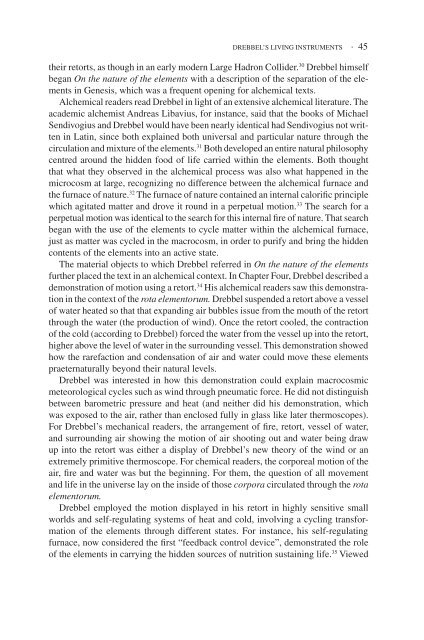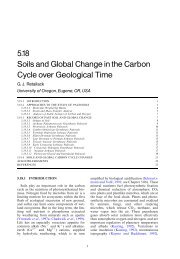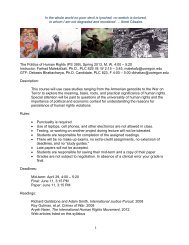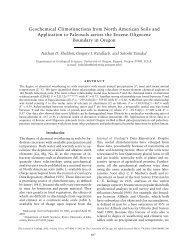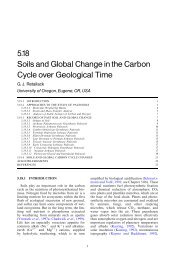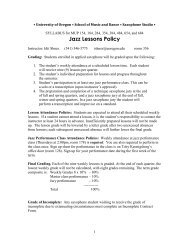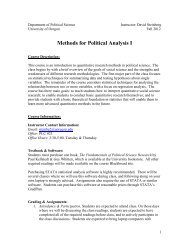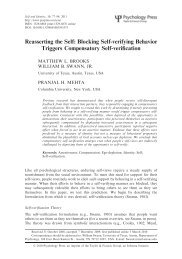drebbel's living instruments, hartmann's microcosm, and libavius's ...
drebbel's living instruments, hartmann's microcosm, and libavius's ...
drebbel's living instruments, hartmann's microcosm, and libavius's ...
Create successful ePaper yourself
Turn your PDF publications into a flip-book with our unique Google optimized e-Paper software.
DREBBEL’S LIVING INSTRUMENTS · 45their retorts, as though in an early modern Large Hadron Collider. 30 Drebbel himselfbegan On the nature of the elements with a description of the separation of the elementsin Genesis, which was a frequent opening for alchemical texts.Alchemical readers read Drebbel in light of an extensive alchemical literature. Theacademic alchemist Andreas Libavius, for instance, said that the books of MichaelSendivogius <strong>and</strong> Drebbel would have been nearly identical had Sendivogius not writtenin Latin, since both explained both universal <strong>and</strong> particular nature through thecirculation <strong>and</strong> mixture of the elements. 31 Both developed an entire natural philosophycentred around the hidden food of life carried within the elements. Both thoughtthat what they observed in the alchemical process was also what happened in the<strong>microcosm</strong> at large, recognizing no difference between the alchemical furnace <strong>and</strong>the furnace of nature. 32 The furnace of nature contained an internal calorific principlewhich agitated matter <strong>and</strong> drove it round in a perpetual motion. 33 The search for aperpetual motion was identical to the search for this internal fire of nature. That searchbegan with the use of the elements to cycle matter within the alchemical furnace,just as matter was cycled in the macrocosm, in order to purify <strong>and</strong> bring the hiddencontents of the elements into an active state.The material objects to which Drebbel referred in On the nature of the elementsfurther placed the text in an alchemical context. In Chapter Four, Drebbel described ademonstration of motion using a retort. 34 His alchemical readers saw this demonstrationin the context of the rota elementorum. Drebbel suspended a retort above a vesselof water heated so that that exp<strong>and</strong>ing air bubbles issue from the mouth of the retortthrough the water (the production of wind). Once the retort cooled, the contractionof the cold (according to Drebbel) forced the water from the vessel up into the retort,higher above the level of water in the surrounding vessel. This demonstration showedhow the rarefaction <strong>and</strong> condensation of air <strong>and</strong> water could move these elementspraeternaturally beyond their natural levels.Drebbel was interested in how this demonstration could explain macrocosmicmeteorological cycles such as wind through pneumatic force. He did not distinguishbetween barometric pressure <strong>and</strong> heat (<strong>and</strong> neither did his demonstration, whichwas exposed to the air, rather than enclosed fully in glass like later thermoscopes).For Drebbel’s mechanical readers, the arrangement of fire, retort, vessel of water,<strong>and</strong> surrounding air showing the motion of air shooting out <strong>and</strong> water being drawup into the retort was either a display of Drebbel’s new theory of the wind or anextremely primitive thermoscope. For chemical readers, the corporeal motion of theair, fire <strong>and</strong> water was but the beginning. For them, the question of all movement<strong>and</strong> life in the universe lay on the inside of those corpora circulated through the rotaelementorum.Drebbel employed the motion displayed in his retort in highly sensitive smallworlds <strong>and</strong> self-regulating systems of heat <strong>and</strong> cold, involving a cycling transformationof the elements through different states. For instance, his self-regulatingfurnace, now considered the first “feedback control device”, demonstrated the roleof the elements in carrying the hidden sources of nutrition sustaining life. 35 Viewed


